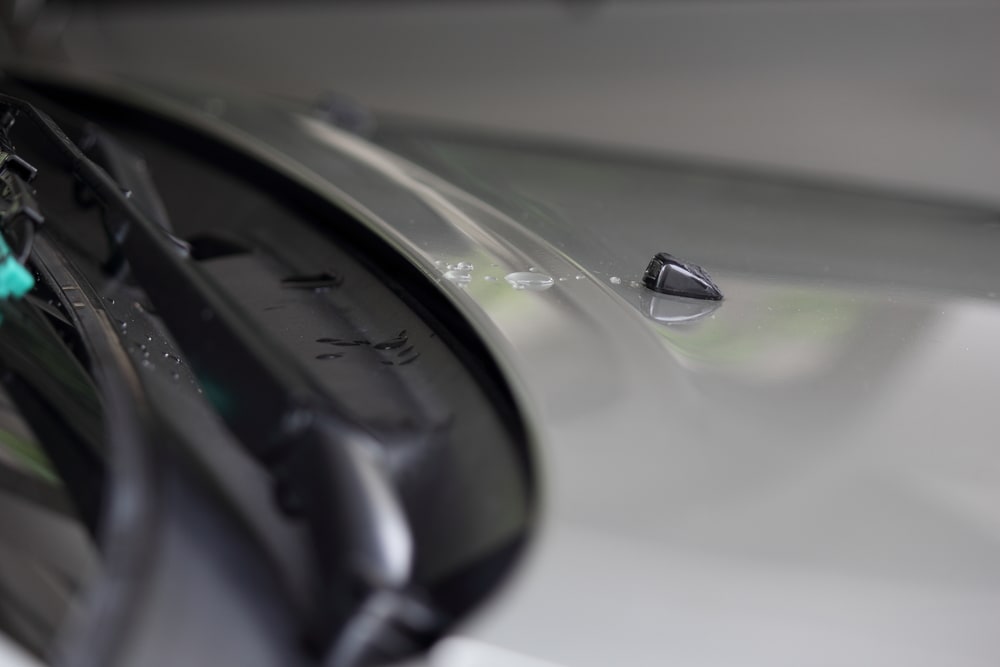

The job of [windshield washer tubes is to transport washer fluid from the reservoir through the pump, to the nozzles, and eventually onto your windshield. Whether you refer to them as tubes or hoses, the part and the job are the same. Typically the washer tubes are clear plastic lines that like any other hose can wear out due to age, exposure to elements, or extreme heat under the vehicle's hood. Once they are damaged, they are often replaced by ASE certified mechanics.
Most cars, trucks, and SUVs sold in the United States are equipped with two, independent windshield washer tubes that run from the pump to the nozzles. They are most often located under the sound dampening material mounted to the underside of the hood, making them very difficult to see without opening the insulated material. When they wear out or are damaged, they will often display a few warning signs or symptoms that will alert the vehicle owner that they need to be replaced as soon as possible to avoid further damage to the windshield washer system.
Noted below are a few of the common symptoms of a bad or failing windshield washer tube.
1. Windshield washer fluid doesn't spray
The most common signal that indicates that a problem with the washer tubes exists is simply when the fluid does not spray out of the nozzles and onto your windshield. When the washer tubes are damaged, they leak fluid and don't have the ability to supply a constant flow of fluid to the nozzles. The tubes can be damaged due to multiple reasons.
2. Mold in the lines
Windshield washer fluid has multiple ingredients that reduce the chances of mold growing inside the tank. Mold thrives on moist, hot environments. Since the windshield washer reservoir is often installed near the vehicle’s engine, it collects a lot of heat, making it a mold growing mecca. A common mistake that car owners make is using regular water instead of washer fluid to keep the tank full. This causes multiple problems such as freezing in colder climates (which can crack the tank), but can also expedite the growth of mold in the tank, pump and the tubes. If mold grows inside the tubes, it becomes like a hardened artery inside the human body – restricting the flow of fluid to the washer nozzles.
3. Burst tubes
Another common side effect of using water instead of washer fluid is that the water inside the tube will freeze during cold weather periods. When this occurs, the plastic tubes will freeze and expand as well and can break the tube, causing it to burst when the pump is activated. If this happens, you might notice water leaking under your car or when you raise the hood, there will be a wet spot in the area under the protective sheet where the tube burst.
4. Cut tubes
Most of the time the windshield washer tubes are protected from being cut, but in many places the tubes are exposed (especially when they run from the pump to the hood). Occasionally during mechanical work, the washer tubes can be cut or clipped on accident and will develop a slow leak. The most common symptom of this is when the flow of washer fluid to the windshield is reduced because there is not enough pressure in the lines.
5. Melted tubes
The washer tubes are connected by clips that are attached to the hood. Sometimes these clips will break or become loose, especially when a vehicle operates on gravel roads or rough road conditions on a consistent basis. When this occurs, they can be exposed to heat coming from the engine. Since the tube is made from plastic, it can easily melt, causing a hole in the tube and creating a leak.
The best way to avoid most of these problems is to use washer fluid only when filling up your reservoir. By doing this, the pump will stay properly lubricated, the tank will not freeze or crack and mold won't grow inside your washer tubes. If you notice that your washer fluid doesn't spray, it may be due to one of the above problems with the washer tubes. The windshield washer tubes will need to be replaced as soon as possible by a local ASE certified mechanic so that additional damage doesn't occur to other windshield washer components.



